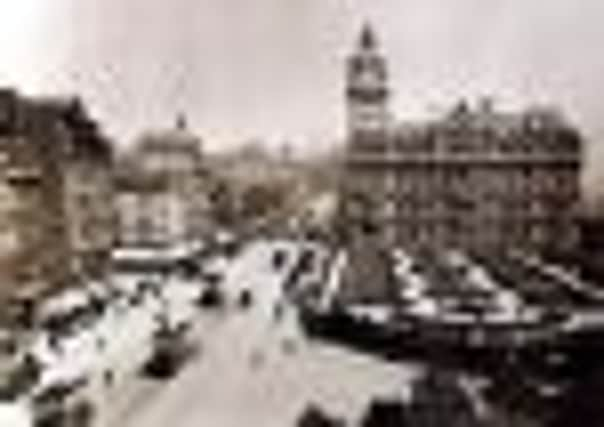Records offer snapshot of life in Edinburgh in 1905


King Edward VII was on the throne and the first public protest by suffragettes led by Emmeline Pankhurst took place at Westminster.
But who was living behind the doors of Edinburgh’s tenements and townhouses at a time of great social change?
Today, for the first time, you can find out.


Advertisement
Hide AdAdvertisement
Hide AdA new online archive has seen more than two million records released, including the professions of those living in the Capital in 1905.
The valuation rolls will plug a large gap left between the ten-year census in 1901 and 1911 and will allow people to easily search for the past occupants of their homes.
They reveal much about the changing social fabric of Edinburgh – such as the growth in women owning property and running businesses, the rise in sports and recreation clubs, the development of music halls and theatres.
The National Records of Scotland said the facility would be “invaluable for genealogists who are trying to fill in gaps about their ancestors”.
However, there is also expected to be considerable interest in the history of buildings including the Empire Theatre, which burnt down in 1911 killing the Great Lafayette – Sigmund Neuberger.
Also among the documents released is a special section on Scotland’s railway hotels, including the North British Hotel, now the Balmoral, which paid £7,000 tax at the time – the equivalent of £401,450 per year today – and the Princes Street Station Hotel, now the Caledonian Hilton, which served the stop between 1890s and 1965.
The first release in the series was last year and featured 1915, providing a snapshot of life during the First World War, and which proved popular with Scots and visitors alike.
Audrey Robertson, acting registrar general and keeper of the records of Scotland, said: “The latest release of details about property owners and tenants in 1905 will be very useful for people researching the history of their family, or of their house or local area.
Advertisement
Hide AdAdvertisement
Hide Ad“The rolls can be searched alongside other records in ScotlandsPeople, and may help locate people who cannot be found in other sources.”
Also among the documents expected to be of interest are the title deeds of politicians such as Keir Hardie, the first Labour MP and later leader, and Conservative leader Arthur James Balfour (1848-1930), the East Lothian-born prime minister who served from July 1902 to December 1905.
Born at Whittinghame House, the rolls now reveal that Balfour, who along with Tony Blair is the only Lothians born PM, owned 235 properties in the counties of East Lothian and Berwickshire.
The ScotlandsPeople archive is free to search, but to view the original records there is a charge, to cover the cost of scanning in millions of documents.
A study last year by consultancy TNS found so-called ancestral tourism in Scotland is worth more than £400 million a year to the economy, but that the market had significant untapped potential.
Fiona Hyslop, cabinet secretary for culture and external affairs, said today: “ScotlandsPeople is a wonderful gateway to Scotland’s wealth of archives. I welcome this latest addition to their digital resources, which can be enjoyed by the people of Scotland, and people of Scottish descent everywhere.”
• The documents are available from www.scotlandspeople.gov.uk from today.
Female revolution
THE records released today highlight the growth in women owning property and running their own businesses.
Advertisement
Hide AdAdvertisement
Hide AdDespite it being 1918 before women were granted the vote, many operated successful firms. Among the examples listed in the new release is Elizabeth Cavers, a widow, the owner-occupier of a shop and house at 6 Easter Road, in the burgh of Leith.
Sports and leisure activities also became more popular with women in the Edwardian era. By 1905 there were numerous ladies’ golf clubs, including at Gullane and North Berwick, tennis clubs and even the female students’ athletics club in Edinburgh.